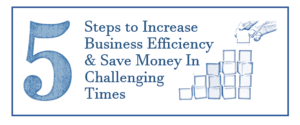
The new pandemic reality has changed the world in many ways.
In a recent conversation with a lead investment advisor in the Commercial Real Estate sector summarized one of the biggest challenges:
THG Energy Compiled the “Top 5” Initiatives That Operations and Facility Managers Can Act on to Maximize Savings
1. Organize Utility Data in One Location
Operational expenditures can’t be managed if they aren’t consistently and accurately measured. For an organization with more than 50 utility bills per month, this is an absolute must. Stop manually entering and paying your utility bills! Eliminate late fees, save money, save time, improve data quality, and put it all in one secure accessible place. Better data, cheaper, easier and more accessible. Do this first!
Multi-facility clients are challenged with managing utility bills, smart meters, and sub-meters from multiple sources. As this trend continues, the ability to manually track more data becomes impossible for most clients. The biggest stumbling block to reviewing usage and utility costs is not having readily accessible and accurate data. THG gathers more than 90% of utility bills electronically, avoiding error prone, and laborious manual data entry processes. Cloud based SaaS enables remote access, and provides scale to ramp up and down. Research shows clients can reduce processing costs by more than 50% by having a third party like THG manage the utility data processing and payments.
2. Prioritize Projects Based on Savings Potential
A tiered approach to energy efficiency planning is cost-effective and practical. It takes about 90 days to set-up, organize and onboard facilities and utility accounts with appropriate history and benchmarking. Once onboard, THG’s Energy Intelligence Suite (EIS) platform provides easy access to a variety of key performance indicators, including energy and utility cost, usage, demand, cost per square foot, cost per energy unit, load factor, and other usage information that allows for quick and effective savings analysis. For facilities that spend <$50,000 per year, the monthly utility bill tracking is likely enough. For larger facilities with high electricity costs, it might make sense to look at including the collection and reporting related to “smart meter” or interval meter data. Pivot the newfound time and visibility to target the highest cost, usage, and demand facilities.
ENERGY STAR is a free federal program that provides buildings and businesses with practical guidance for continuous improvement best practices. Implementing ENERGY STAR benchmarking and demand management initiatives saves anywhere from 5% to 30% annually. Spending less than $5,000 to manage and monitor a $100,000 utility budget generates less than a one-year payback with recurring benefits.
In many cities and counties across the country, periodic ENERGY STAR benchmarking and facility audits are mandated and may involve penalties for non-compliance. ASHRAE defines best practices for energy survey and analysis for energy consulting engineers, LEED® professionals, real estate professionals, building owners, and managers.
ASHRAE requires that a Preliminary Energy-Use Analysis (PEA) be conducted as a prerequisite for any audit. The PEA precedes the audit of the building. THG’s EIS platform provides turn-key integration with both ENERGY STAR and PEA templates. Annual ENERGY STAR scoring, and periodic PEA reviews are fundamental best practices for all buildings with utility costs of more than $50,000 per year. THG has a plan for ENERGY STAR, ASHRAE PEA, and support services for less than $2,500 per year. Benefits from these actions create savings that compound year after year.
3. Generate Savings Through Demand Management.
For facilities that spend over $100,000 per year on electricity, demand management offers significant savings potential. Electricity commodity costs continue to decline while demand and various delivery charges continue to increase, representing a noticeable shift in the cost profile of electricity. We support a wide variety of demand management strategies based upon markets, regions, utilities, operational capabilities, and facility types. Program savings range from $10 per kW per year to $350 kW per year. In other words, reducing kW (demand) saves somewhere between ten (10) to three hundred-fifty (350) times the value of reducing a kWh (consumption).
THG has unmatched data, technology, and market integration capabilities to help clients and partners with practical demand management. Our demand management approach includes utility and program analysis, facility analysis, text and email event notifications, program enrollment and management, real time automation, sub-metering and controls. We are a registered participant in ISO and utility markets, and provide real-time (LMP) pricing integration strategies for all North American markets. We are expert in metering, sub-metering, and leveraging existing building controls to maximize the value of demand management.
4. Prepare for Distributed Energy Resources (DERs).
DERs include behind-the-meter solar and storage, renewable energy assets, EVs, and other emerging technologies. DERs will revolutionize energy access and delivery in the next five years. Even in regulated utility service territories, facility managers have new alternatives and choices. These alternative energy sources are driving the need for better data analytics to make better decisions. Facility “rightsizing” includes understanding your load profile and capacity requirements before making the informed investment decisions. New models for DER and efficiency project financing are emerging that will transform the energy sector. Use this economic “down time” to understand your facility load profiles, minimize exposure to demand and delivery costs, and right size energy efficiency investments.
5. Raise Awareness of the Energy Efficiency and Business Sustainability
THG provides clients with actionable benchmarking metrics to help identify energy efficiency projects, provide tools to conduct measurement and verification of savings, and highlight practical ways to run your business more sustainability. Whether its periodic reports, public dashboards, text or email event notifications, or just easy and secure access to data, let THG help with hard facts and data.
